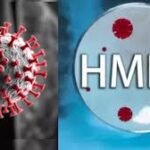We envision a world where everyone has the tools and knowledge to live a balanced, healthy, and fulfilling life. By providing reliable resources, personalized programs, and community support, we aim to be a beacon of hope for those on their health journey.
Table of Contents
Understanding Headaches

Headaches are a common health complaint characterized by pain in the head, scalp, or neck region. They can range from mild to severe and may significantly impact a person’s quality of life. There are various types of headaches, each with unique characteristics, triggers, and symptoms. learn how to reduce Work Stress is the New Silent Killer—Here’s Why; The three most prevalent types include tension headaches, migraines, and cluster headaches.
Tension headaches are often described as a feeling of pressure or tightness around the head, akin to wearing a too-tight band. They may arise from stress, anxiety, poor posture, or muscle strain. Symptoms typically include a dull, aching pain, which may be accompanied by neck stiffness. These headaches can vary in frequency, occurring occasionally or as a chronic condition.
On the other hand, migraines are more intense and can be debilitating. This type of headache often presents with throbbing pain, usually on one side of the head. Migraines may also be associated with other symptoms such as nausea, vomiting, and sensitivity to light and sound. They can be triggered by various factors, including hormonal changes, certain foods, stress, and environmental conditions.
Cluster headaches, while less common, are known for their severe and excruciating pain that occurs in clusters or groups. The pain is typically localized around one eye and can be accompanied by redness in the eye, nasal congestion, or sweating on the affected side of the face. Cluster headaches often follow a cyclical pattern, triggering episodes during certain times of the year or even at specific times of the day.
Common symptoms associated with headaches may include visual disturbances, fatigue, or irritability. Understanding the type and nature of headaches can aid in identifying potential underlying causes, which may include lifestyle factors, medical conditions, or environmental triggers. Gaining insight into these aspects is crucial in finding effective and appropriate treatments.
Home Remedies for Headaches
Headaches can arise from various triggers, and while over-the-counter medications are commonly used, many individuals seek alternative relief through home remedies. These natural treatments can be simple, accessible solutions that offer effective respite from headache pain. One popular home remedy is herbal teas, particularly chamomile or peppermint tea. Chamomile is known for its calming properties, which can help relax tense muscles, while peppermint tends to stimulate circulation and relieve tension headaches. Drinking a warm cup of herbal tea can not only hydrate the body but also provide a soothing effect against headache discomfort.
Another widely utilized home remedy is the application of essential oils. For instance, lavender essential oil is frequently employed for its calming scent and potential to reduce headache symptoms. It can be diffused in the air or diluted with a carrier oil and rubbed on the temples. Similarly, eucalyptus oil, which has anti-inflammatory properties, may also prove beneficial. A gentle massage with these oils can enhance relaxation and alleviate the throbbing sensation associated with headaches.
Acupressure techniques are an additional method to consider. This ancient practice involves applying pressure to specific points on the body to relieve pain. For headaches, a common acupressure point is located between the thumb and index finger. By pressing and holding this area for several minutes, individuals may experience a reduction in headache intensity. Alternatively, massaging the base of the skull or the forehead can also provide comfort and alleviate tightness in the muscles.
Incorporating these home remedies can be a gentle approach to managing headaches. By utilizing herbal teas, essential oils, and acupressure techniques, individuals can explore effective strategies to find relief naturally, all from the comfort of their home.
Medical Treatments for Headaches

When it comes to managing headaches, various medical treatment options are available that cater to the diverse needs of individuals experiencing discomfort. Over-the-counter (OTC) pain relievers are often the first line of defense for mild to moderate headaches. Common OTC options include acetaminophen, ibuprofen, and aspirin. Each of these medications comes with specific dosage guidelines that should be adhered to strictly to avoid potential complications. For instance, while ibuprofen may be effective for some individuals, excessive use can lead to gastrointestinal issues or kidney damage.
For more severe or chronic headaches, healthcare professionals may prescribe medications specifically formulated to address headache disorders. These treatments can include triptans, which are often used for migraines, and are designed to target the mechanisms that cause headache pain. Other prescription medications, such as certain antidepressants or anti-seizure drugs, may be used for their preventative properties, helping to reduce the frequency and severity of headache episodes. Understanding the specific characteristics of each medication, including their indications and contraindications, is crucial for effective treatment.
Importantly, individuals should consult a healthcare professional before starting any new medication regimen, whether it involves OTC or prescription drugs. A medical expert can provide personalized recommendations based on a comprehensive evaluation of the individual’s health history and any underlying conditions contributing to headache symptoms. Additionally, potential side effects must be considered, ranging from mild symptoms like drowsiness to more severe reactions, which can impact an individual’s quality of life. Thus, medical treatment should be approached with careful consideration and professional guidance to ensure safe and effective headache management.
Lifestyle Changes to Prevent Headaches
Preventing headaches can often be achieved by implementing effective lifestyle changes that target various triggers. One of the most significant factors contributing to headaches is stress. Therefore, managing stress through techniques such as mindfulness, meditation, and deep-breathing exercises can play a vital role in reducing their frequency. Engaging in regular physical activities, such as yoga or aerobic exercises, can also alleviate tension and improve overall well-being.
Another crucial consideration is sleep hygiene. Poor sleep quality or inconsistent sleep patterns are well-documented headache triggers. Establishing a regular sleep schedule, ensuring a comfortable sleep environment, and minimizing screen time before bed can enhance sleep quality, subsequently lowering the risk of headaches. Ensuring adequate rest is essential, as chronic sleep deprivation can lead to an increased susceptibility to headaches.
Hydration is often overlooked but is equally important in headache prevention. Dehydration can lead to tension headaches, and therefore, maintaining appropriate fluid intake throughout the day is necessary. Adults should aim for at least 8 cups (2 liters) of water daily; however, individual needs may vary based on activity levels and climate. Keeping hydrated not only helps in managing headaches but also supports overall health.
Furthermore, diet significantly influences headache occurrences. Regular meal times, along with a balanced diet rich in fruits, vegetables, whole grains, and lean proteins, can improve vulnerability to headaches. Identifying and avoiding food triggers, such as caffeine, alcohol, and highly processed foods, can also provide relief. Keeping a headache diary could assist individuals in detecting patterns linked to dietary choices.
Incorporating these lifestyle adjustments may require gradual changes, but they can lead to substantial improvements in headache management. By prioritizing stress control, sleep quality, hydration, and a well-balanced diet, individuals may experience fewer headaches and enhanced overall quality of life.
Alternative Therapies for Headaches

Headaches can be debilitating and affect various aspects of daily life. While conventional treatments such as over-the-counter medications are widely used, many individuals are increasingly turning to alternative therapies for relief. Approaches like acupuncture, chiropractic care, and massage therapy have shown promise in alleviating headache symptoms and improving overall well-being.
Acupuncture, a key component of traditional Chinese medicine, involves inserting thin needles into specific points on the body. Research has highlighted its effectiveness in treating tension-type headaches and migraines. A systematic review published in the Journal of Pain found that acupuncture may provide greater short-term relief than standard medical treatments. Its efficacy is thought to stem from its ability to promote the release of endorphins and regulate neurotransmitter levels, thus reducing pain perception.
Chiropractic care focuses on diagnosing and treating musculoskeletal disorders, particularly those affecting the spine. Many individuals suffering from headaches have found relief through spinal manipulation, which can help alleviate tension in the neck and shoulders—common sources of headaches. A study featured in the Journal of Manipulative and Physiological Therapeutics indicates that chiropractic adjustments can significantly reduce the frequency and intensity of tension-type headaches. By improving spinal alignment and enhancing blood circulation, chiropractic care may effectively mitigate headache symptoms.
Massage therapy is another alternative treatment renowned for its relaxing properties. This therapy not only helps relieve muscular tension but also promotes mental relaxation. Various studies have demonstrated that massage can effectively reduce the severity and frequency of headaches, particularly for those related to stress. Techniques such as Swedish or deep tissue massage may target areas of tightness that contribute to headaches, providing a holistic approach to treatment.
Incorporating these alternative therapies into a comprehensive headache management plan can offer individuals a wider array of options for alleviating pain. By considering alternative methods such as acupuncture, chiropractic care, and massage therapy, individuals can discover tailored strategies that may lead to lasting relief from headaches.
When to Seek Medical Attention
While headaches are a common ailment that many individuals experience, it is crucial to recognize when medical attention is necessary. Certain warning signs, often referred to as “red flags,” indicate that a headache may require further evaluation by a healthcare professional. One of the primary concerns is a sudden onset of severe headache, often described as a “thunderclap headache.” This type of headache can signal a serious condition such as a hemorrhagic stroke or a significant vascular incident, necessitating immediate medical intervention.
Another important consideration is the occurrence of headaches following a head injury. This can indicate a concussion or other brain injury, and if the headache is persistent or worsening, seeking medical help is imperative. Additionally, headaches accompanied by neurological symptoms—such as confusion, difficulty speaking, vision changes, or weakness—are reasons to consult a healthcare provider promptly, as they may suggest a more serious underlying condition such as a stroke or brain tumor.
Furthermore, headaches that deviate from a person’s typical pattern or those that are progressively worsening deserve attention. If a new type of headache emerges, especially if it is associated with symptoms like fever, stiff neck, rash, or unusual drowsiness, it is advisable to seek medical care. These symptoms can indicate conditions such as meningitis or other infections affecting the central nervous system.
In summary, recognizing the signs that warrant medical attention can be crucial in preventing potential complications. Awareness of the warning signs associated with headaches is essential for ensuring timely and effective treatment, ultimately leading to better health outcomes. Individuals who experience any of these concerning symptoms should prioritize consulting a healthcare professional for appropriate assessment and management.
Avoiding Common Headache Triggers
Headaches can be triggered by a wide range of factors, and understanding these common culprits is crucial for effective prevention and management. One significant category of headache triggers includes certain foods. Items such as aged cheeses, processed meats, and foods containing high levels of monosodium glutamate (MSG) are known to provoke headaches in some individuals. To minimize the risk of headaches, it is advisable to maintain a food diary to identify any specific items that may cause discomfort and to avoid them when possible.
In addition to dietary considerations, environmental factors can also play a pivotal role in triggering headaches. Bright lights, strong odors, and loud noises can all lead to discomfort for those susceptible to headaches. Therefore, creating a calming environment can aid in prevention. Simple adjustments such as using soft lighting, ensuring adequate ventilation to avoid strong scents, and utilizing noise-canceling headphones can significantly reduce headaches linked to environmental stimuli.
Lifestyle habits represent another essential area to consider when aiming to avoid headache triggers. Inadequate hydration, irregular sleep patterns, and excessive stress are often contributors to the experience of headaches. To combat these issues, ensuring sufficient water intake throughout the day is vital, as dehydration is a common headache instigator. Furthermore, establishing a regular sleep schedule and incorporating relaxation techniques, such as meditation or yoga, may substantially decrease headache occurrences linked to stress and sleep disruptions.
By being proactive in identifying and avoiding these common headache triggers, individuals can empower themselves with strategies that support their overall well-being and enhance their quality of life. Making conscious adjustments in diet, environment, and lifestyle will contribute to an effective headache management plan, ultimately leading to fewer and less severe headache episodes.
Using Technology to Manage Headaches

In recent years, technology has emerged as a vital resource in the management and treatment of headaches. Various applications, wearable devices, and online platforms can effectively assist individuals in tracking headache patterns, identifying triggers, and employing relaxation techniques. By leveraging these tools, patients can gain invaluable insights into their headache experiences and improve their self-care practices.
For those seeking to track headache patterns, numerous mobile applications are available. These apps often enable users to input data related to headache occurrence, duration, severity, and associated symptoms. By consistently recording this information, individuals can recognize patterns over time and identify potential triggers, such as dietary choices, stress levels, or sleep quality. This data can be particularly beneficial when discussing headache management with healthcare professionals, as it provides a clearer picture of the individual’s situation. Moreover, some applications offer reminders to take medications or practice relaxation exercises, contributing to a proactive approach to headache management.
Mindfulness and relaxation techniques are also critical components in managing headaches. Various technology platforms provide guided meditations and relaxation exercises designed to alleviate headache symptoms. Through the use of these resources, individuals can learn how to effectively reduce stress, a common headache trigger. Wearable devices, such as smartwatches and fitness trackers, can also encourage regular mindfulness practices by prompting users to engage in breathing exercises or stand up and stretch periodically throughout the day.
In conclusion, by incorporating technology into headache management routines, individuals can better understand their symptoms and triggers while enhancing relaxation and self-care practices. With a wide range of tools available, patients are empowered to take an active role in managing their headaches. This integrated approach can significantly improve overall quality of life for those suffering from recurring headache conditions.
Conclusion: Finding What Works for You
In navigating the complex landscape of headache treatment, it is crucial to remember that individual experiences may vary significantly. This comprehensive guide has outlined a range of effective ways to manage headaches, from over-the-counter medications to lifestyle modifications. Each approach presents unique benefits, but their effectiveness often hinges on individual circumstances, including the type of headaches experienced and personal health conditions.
One of the most important takeaways from this discussion is the necessity of personalizing treatment plans. What alleviates symptoms for one person may not yield the same results for another. Therefore, it is advisable for individuals suffering from chronic headaches to engage in a process of trial and error, experimenting with different therapies to determine which options provide the best relief. This may include adjusting medication dosages, adopting relaxation techniques, or incorporating specific exercises into daily routines.
Furthermore, combining various treatment methods can often lead to more effective results. While medications can provide immediate relief, integrating holistic approaches such as mindfulness, yoga, or acupuncture may enhance overall well-being and reduce the frequency of headache occurrences. Keeping a headache diary to track symptoms and responses to different treatments can also assist in identifying patterns and triggers, thereby informing more tailored strategies.
Ultimately, the goal of headache management is to regain control over one’s life while minimizing discomfort. As pain relief options abound, individuals are encouraged to be proactive in seeking solutions that best align with their unique needs and preferences. By taking an informed and adaptive approach, individuals can significantly improve their quality of life and effectively address their headache challenges.








